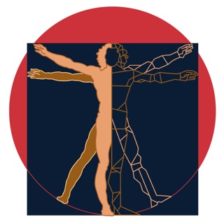The highly theoretical nature of the field of Cognitive archeology requires it to use various approaches from different disciplines in order to come up with somewhat reasonable theory as a solution to the problems that it seeks to answer. This is but necessary considering that cognitive archeologist could no longer conduct actual experiments on their subjects as they only rely on the artifacts that has been left behind in order to come up with a reasonable conclusion or theory on the evolution of cognition.
Seeking to understand the cognition of evolution, most cognitive archeologist rely heavily on an evolutionary framework and some has drawn inferences from their studies of primates, which is said to be modern man’s distant cousin.
The logic of this inference is simple. Since evolutionary theory has proposed that man and primates comes from a common ancestor (Which remains to be discovered and is aptly called “the missing link”) it must therefore be logical to conclude that the elements and or attributes of this pre-modern human cognition can be found in primates. Hence by studying the cognition of primates, we may be able to infer or draw theories about the cognitive abilities of pre-modern man and come up with theories about the evolution of cognition.
Such kind of inference was the basis for the work of archeologist Nicholas Toth who together with Kathy D. Shick E. Sue Savage-Rumbaugh, Rose A. Sevcik and Duane Rumbaugh co-authored the article entitled “Pan the Tool-Maker: Investigation into the Stone Tool-Making and Tool-Using Capablities of the Bonobo” which is publish in 1993. Beginning in 1990 they conducted a long-term collaborative investigation between Paleolithic archeologist and cognitive psychologist to investigate the tool-using abilities of a captive Bonob named “Kanzi.” The aim of their research is to investigate the possible cognitive and bio-mechanical conditions of pre-adaptation for lithic technology present in extant apes. The stone making abilities of Kanzi are then compared to those said to be made by earlier hominids in order to understand the complexities of what is assumed to be derived behavior pattern of the early stone makers. No definite conclusion has yet been derived from the study but further future researches has been planned to determine the possible evolutionary implications.
Another example of the use of inferences in Cognitive Evolution is through ethnographic studies. The logic behind this is similar to the one on studying primates with a slightly different twist, that is since man evolved from early hominids the attributes and structures of pre-modern cognition must still remain in modern man and there is no better way to observe this than to study the stone tool production of modern man.
This was exactly the reasoning behind the study conducted by Dietrich Stout from Indiana University who published an ethnographic case study entitled “Skill and Cognition in Stone Tool production” as a Ph.D candidate in 2003. The complex ethnographic research was undertaken in the village of Langda Indonesia. In this study Dietrich Stout went to great lengths to observe and describe the symbolic, cultural and technical aspects of stone tool making which the people in Langda called “Adze.” In this study, Stout also discuses and draws inferences on the possible evolutionary cognitive implications of Adze tool making.
Considering the complexities, not to mention the great time and resources devoted to the above mentioned studies a crucial question to ask is this are the insights drawn from teaching a Bonobo to knap, or from observing Adze knappers relevant to understanding cognition in the Stone Age? Are bonobos and modern humans reliable surrogates for prehistoric hominins ? Can drawing inferences from Bonobos and lithic producing human beings aid in our quest to answer questions on the evolution of cognition?
There may be no simple “Yes” or “No” answers. However consider this, The logical conclusions drawn from inferences are only valid if the premises are known to be true.
If the entire evolutionary framework is not true, then just like a house of cards all inferences drawn from it falls apart. What if modern humans and primates came about as an entirely different species separate and distinct from primates and that they did not evolve from a common ancestor?
But assuming that the entire evolutionary framework is true, what if modern human has evolved to the point where no traces of pre-modern cognition can be found anymore in modern human cognition. What if the evolution of primates digressed too far to the point that no traces of the cognition of “the missing link” can be found anymore in primate cognition?
Further since what is preserved in the archeological record are mostly stone tools, what if we have underestimated the cognitive abilities of pre-historic hominins? What if they made more than just stone tools or they made even more sophisticated stone tools or better yet, other tools that have yet to be discovered or may not even be discovered anymore as it is not anymore preserved in the archeological record.
These may be hard questions but these are valid questions and in the pursuit of scientific truth these possibilities has to be considered.
 Hi ! my name is Zigfred Diaz. Thanks for visiting my personal blog ! Never miss a post from this blog. Subscribe to my full feeds for free. Click here to subscribe to zdiaz.com by Email
Hi ! my name is Zigfred Diaz. Thanks for visiting my personal blog ! Never miss a post from this blog. Subscribe to my full feeds for free. Click here to subscribe to zdiaz.com by Email
You may also want to visit my other blogs. Click here to learn more about great travel ideas.


Leave a Reply